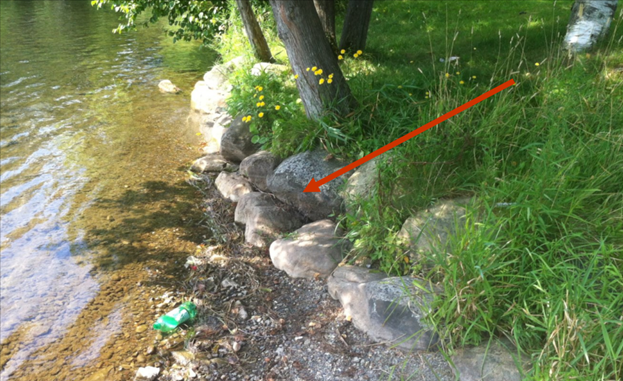PRESS RELEASE
For Immediate Release - March 28, 2023
Contact:
Misha Cetner, Lake and Shoreland Ecologist
Department of Environmental Conservation
802-490-6199, misha.cetner@vermont.gov
DEC Pauses Construction Projects in Vermont Lakes During Spring Fish Spawning Season
Montpelier, VT – During the spring fish spawning season, the Department of Environmental Conservation (DEC) wants to remind Vermonters that permitted Lake Encroachment construction projects (like shoreline stabilization or projects that disturb the lakebed) in public lakes and ponds are typically not allowed from March 15 to July 1.
Examples of Lake Encroachment construction projects that are not allowed during this period include adding fill in the water for shoreline stabilization (such as riprap or seawalls), boathouse reconstruction, or dredging. Examples of projects that can potentially move forward during this time frame include installing docks, floats, rafts, buoys, and regular repairs or maintenance to existing encroachments.
“Vermont’s public waters offer us many benefits from clean drinking water and recreation to outstanding fish and wildlife habitat,” said from DEC Commissioner John Beling. “By pausing permitted projects during the spring fish spawning season, we can help support the health and breeding success of fish populations statewide.”
Any project that proposes work at, below, or beyond mean water level of public lakes or ponds may require a Lake Encroachment Permit. The mean water level is the average height of a water body over time and often marks where plants no longer grow. DEC staff will continue to accept and review permit applications during the spring spawning season. After July 1, permitted construction projects may resume or begin.
“From northern pike to smallmouth bass, thousands of eggs develop and hatch between March 15 and July 1,” said Fish Program Manager Maureen Lynch, Department of Fish and Wildlife. “Protecting and promoting fish populations mean not only a healthy aquatic environment but also healthy wildlife populations, a healthy tourism economy, and a quality of life for those that value our state's fisheries.”
When reviewing Lake Encroachment permit applications, DEC staff examine any impacts to habitat, water quality, recreation, and other uses. Permitted projects must minimize impacts to fish and wildlife habitat.
Learn more about the Lake Encroachment Permit. To learn about other state environmental permits, visit the Permit Navigator. If Misha Cetner is not available, contact Laura Dlugolecki (802-490-6133, laura.dlugolecki@vermont.gov) or Maureen Lynch (802-485-7567, maureen.lynch@vermont.gov).
###

The mean water level (shown with a red arrow) is the average height of a water body over time and often marks where plants no longer grow.
